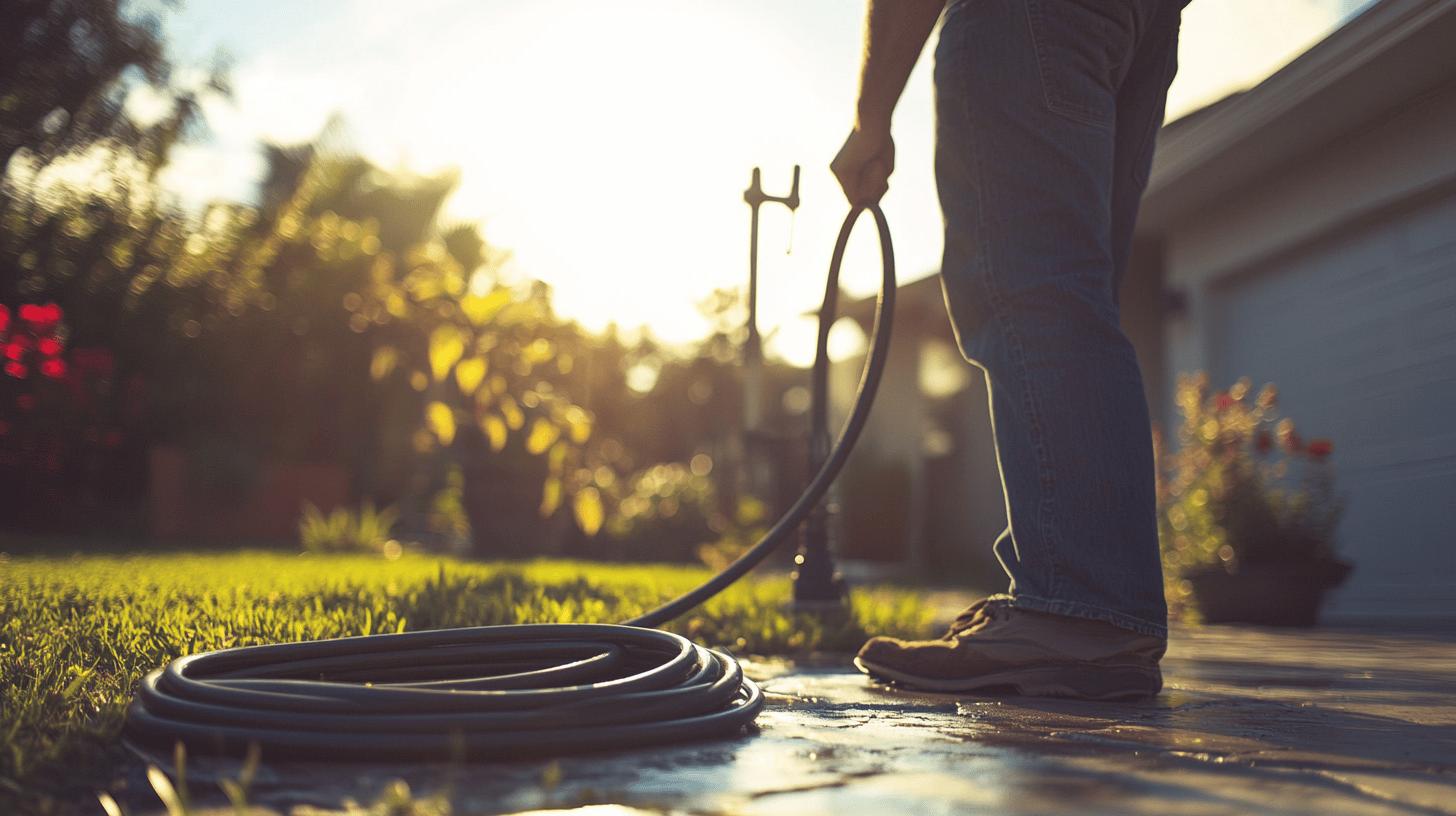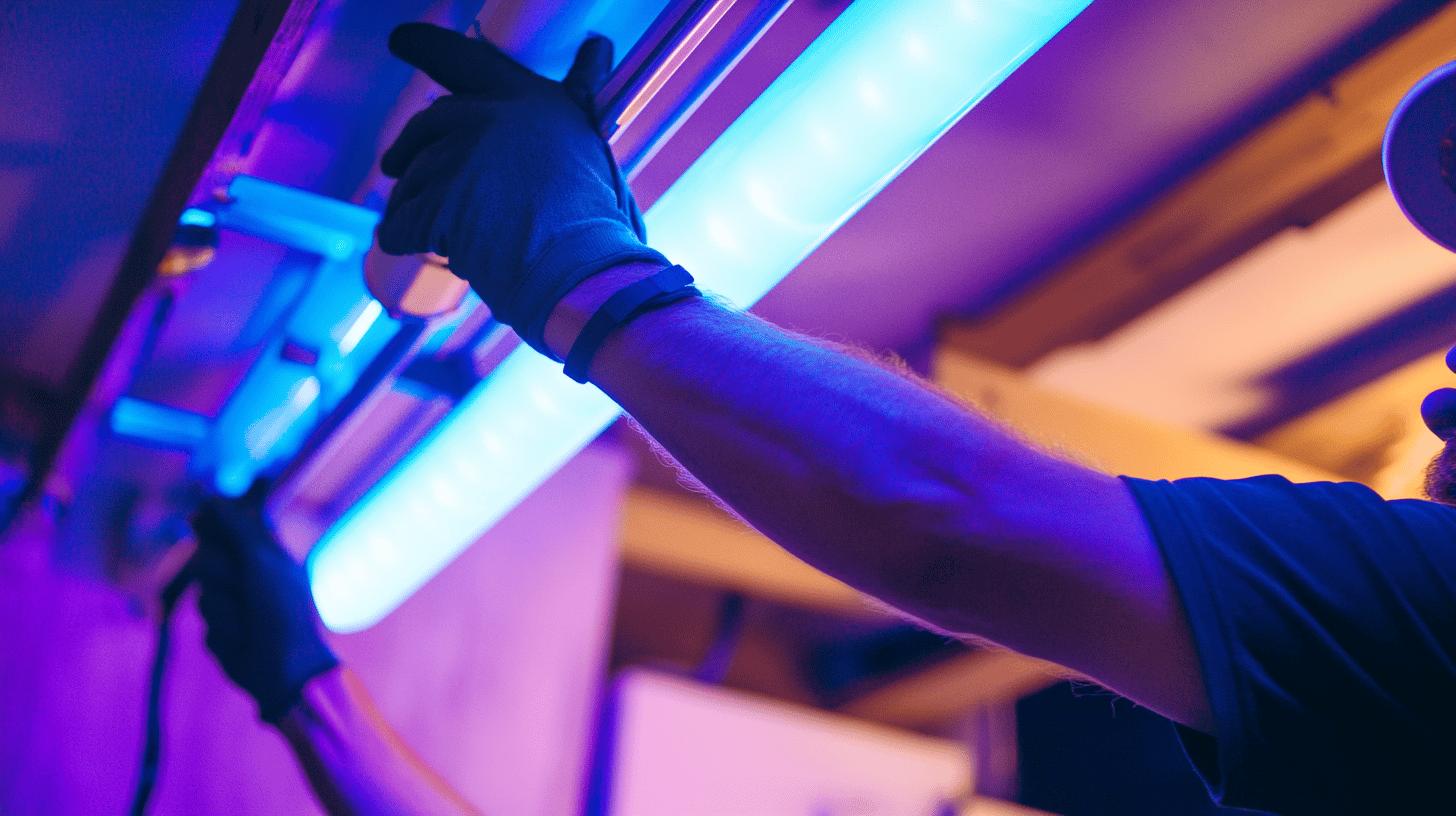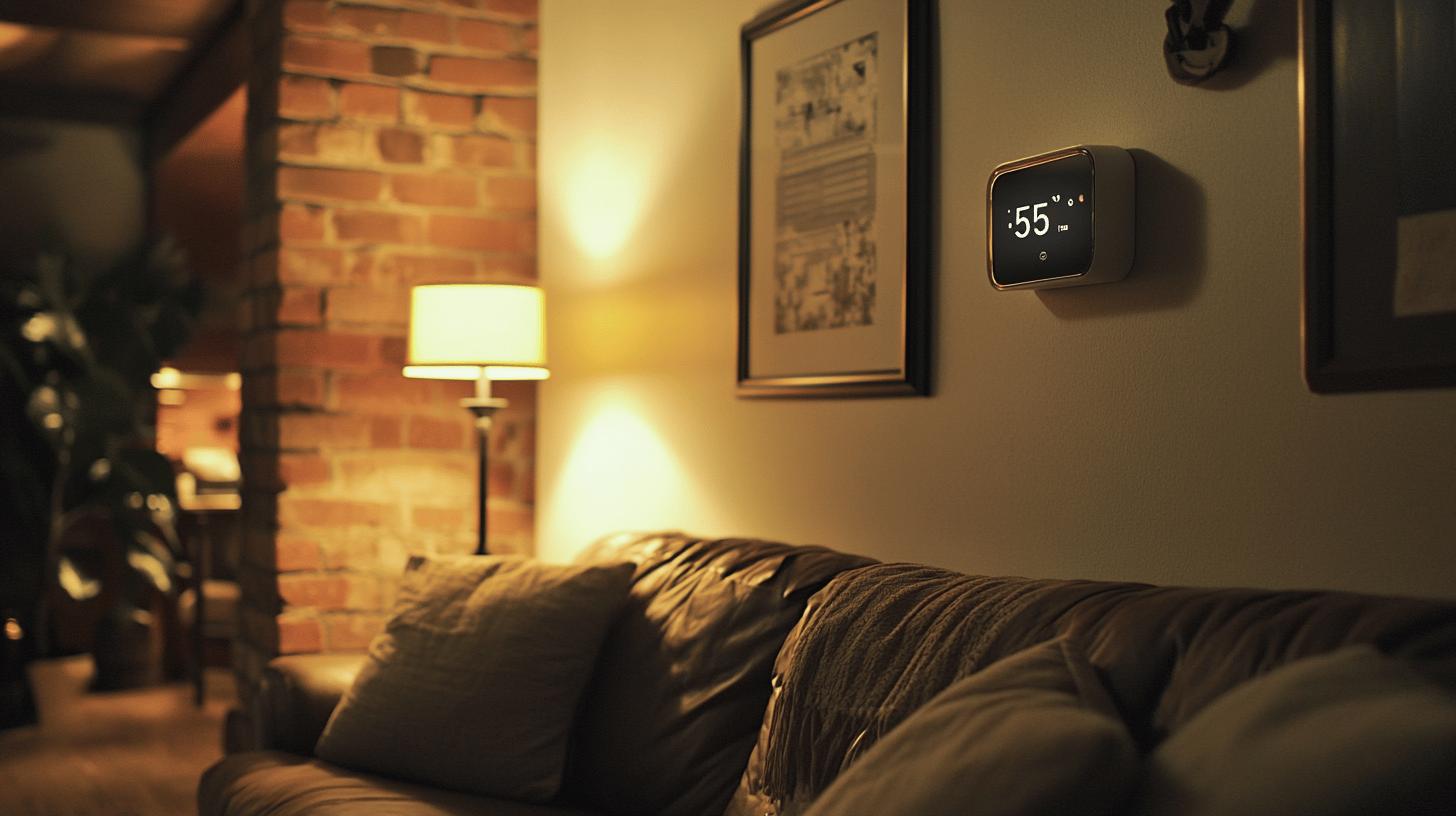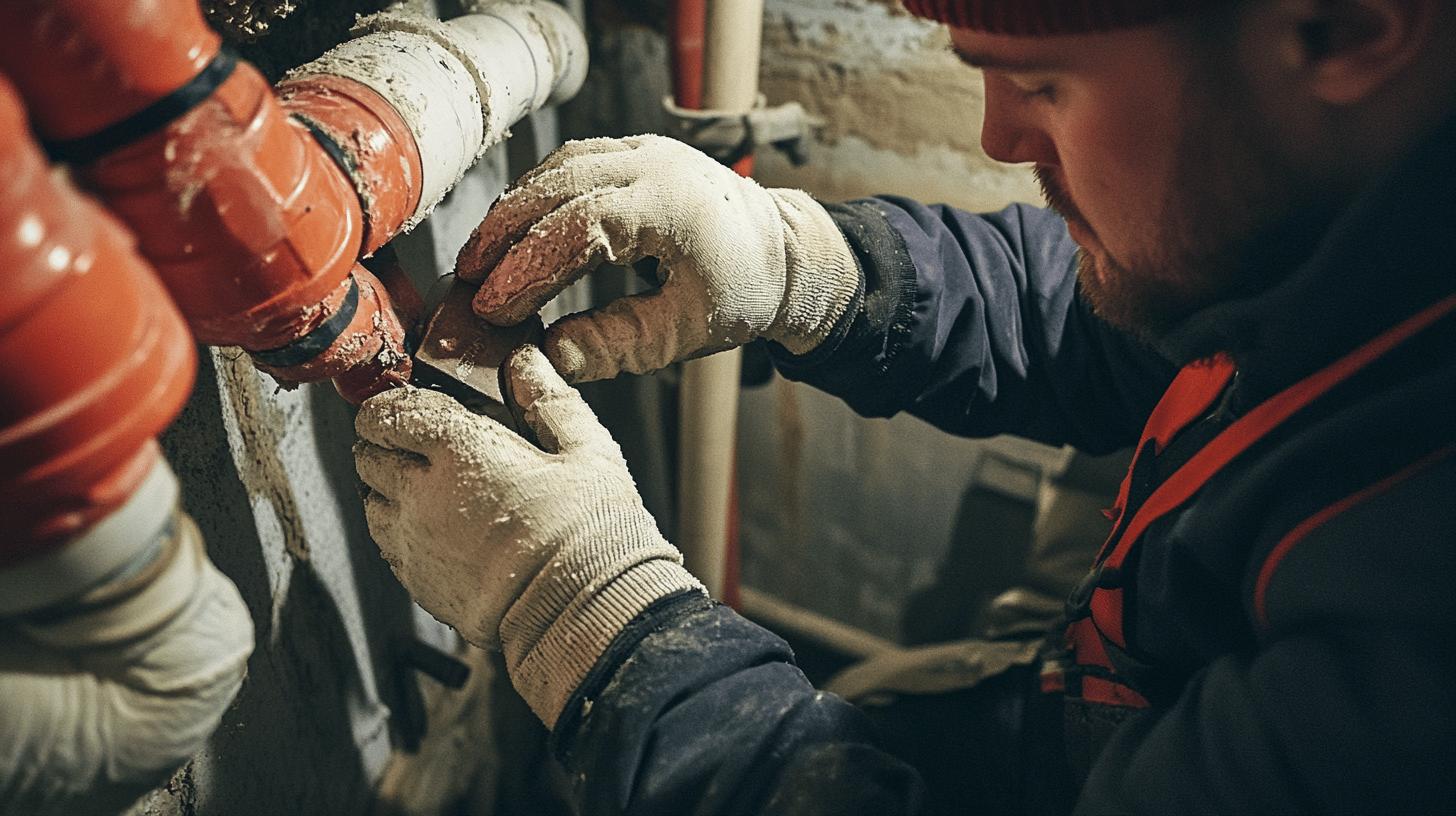TL;DR:
- Insulating pipes prevents freezing by maintaining water temperatures above freezing.
- Materials for pipe insulation: Foam, Heat Tape, Rubber, Fiberglass Wrap, Towels.
- To winterize outdoor faucets: Disconnect hoses, drain them, shut off water, open faucets.
- Seal gaps and leaks to protect plumbing from cold air.
- Heat tape wraps pipes to prevent freezing; frost-proof faucets and thermal wrappings are also effective.
- Maintain home temperature above 55°F to winterize plumbing; tips include opening cabinet doors, letting faucets drip, and sealing drafts.
- Consult professionals for thorough insulation and plumbing winterization.
Is your home prepared for the cold months ahead? Winterizing your plumbing is key to preventing frozen pipes and avoiding costly repairs. Winterizing involves several crucial steps to safeguard your plumbing system from freezing temperatures. This guide will walk you through the process, from insulating pipes to adjusting thermostat settings. By the end, you’ll have practical tips and insights to keep your plumbing in top shape all winter long. Ready to get started? Let’s dive in!
Insulating Pipes to Prevent Freezing
Insulating pipes helps prevent freezing by keeping the water inside at a temperature above freezing, even during the coldest months. This is especially important in unheated spaces like basements, attics, and crawl spaces, where pipes are more vulnerable to freezing. Proper insulation acts as a protective barrier, preventing pipes from cracking and bursting, which can lead to costly repairs and water damage. By ensuring a steady water flow, insulated pipes protect your plumbing system, reducing the risk of plumbing emergencies and keeping your home safe throughout the winter.
Here are five common materials and methods for insulating pipes:
- Foam Pipe Insulation: Easy to install, effectively guards against cold.
- Heat Tape: Electrically powered, wraps around pipes to keep a stable temperature.
- Rubber Pipe Insulation: Flexible and durable, great for tight spaces.
- Fiberglass Pipe Wrap: Fits high-temperature pipes, offers excellent insulation.
- Towels or Blankets: Temporary protection in emergency situations.
While DIY insulation can be effective, hiring professional plumbing services offers added benefits. Professionals assess your home’s unique needs, choose the right materials, and install insulation with precision. Their expertise ensures there are no gaps or missed areas, especially in hard-to-reach spots. By hiring experts, you can be confident that all exposed pipes are properly insulated, reducing the risk of freezing and potential damage. This peace of mind helps protect your plumbing system throughout the winter, preventing costly repairs.
Shutting Off and Draining Outdoor Faucets

Draining outdoor faucets is crucial because any water left inside can freeze when temperatures drop, causing pipes to burst. This not only leads to expensive repairs but can also result in leaks that damage your home’s structure. By properly shutting off and draining your outdoor faucets, you prevent these winter hazards and protect your plumbing system from freezing-related issues.
Prepare your outdoor plumbing with these steps:
- Disconnect Garden Hoses: Remove hoses from spigots to prevent trapped water from freezing.
- Drain the Hoses: Shake out water, store hoses in a garage or shed.
- Shut Off Water Supply: Turn off the valve for outdoor faucets, typically found indoors.
- Open Outdoor Faucets: Let any remaining water escape, relieving pipe pressure.
If you’re unsure about winterizing your outdoor faucets or if your system is complex, consider hiring a professional. Experts ensure every step is done correctly to protect your outdoor faucets and plumbing system, reducing the risk of freezing and costly damage during winter.
Sealing Leaks and Gaps to Protect Plumbing
Leaving gaps and leaks unsealed in winter can expose your plumbing to freezing temperatures, increasing the risk of burst pipes. Cold air can seep in through cracks around windows, doors, and vents, causing significant water damage and costly repairs. Sealing these gaps with materials like caulking and weather stripping is key. Caulking fills cracks, while weather stripping seals movable parts, both enhancing insulation and protecting your plumbing.
Why choose professional inspections? Experts can identify hidden issues that might be missed during DIY efforts, ensuring thorough sealing with advanced tools. Their knowledge ensures your plumbing stays safe, preventing costly repairs.
Using Heat Tape and Other Freeze Protection Products

Heat tape is an electrical strip that wraps around pipes to keep them warm during cold weather. It maintains a consistent temperature to prevent water inside from freezing and pipes from bursting. Some heat tapes are self-regulating, adjusting their heat output based on surrounding temperatures for better efficiency.
Other freeze protection products include frost-proof faucets and thermal wrappings. Frost-proof faucets keep water lines away from cold exteriors, preventing freezing. Thermal wrappings, such as foam insulation or rubber sleeves, provide an extra layer of protection by helping retain heat around the pipes. Using these products, either alone or in combination, ensures your plumbing stays safe from freezing.
| Product | Use | Benefits |
|———————–|———————————————|———————————————|
| Heat Tape | Wraps pipes to keep a stable temperature | Prevents freezing, easy to install |
| Frost-Proof Faucets | Outdoor faucets resist freezing | Long-term solution for outdoor plumbing |
| Thermal Wrappings | Insulation for pipes | Enhances heat retention, versatile application |
Using freeze protection products significantly reduces the risk of winter plumbing issues. Each product offers unique advantages—heat tape ensures pipes stay warm, frost-proof faucets prevent freezing in outdoor plumbing, and thermal wrappings provide extra insulation. When combined, these solutions create comprehensive protection against the cold, helping safeguard your plumbing system all winter long.
Winterizing Interior Plumbing Systems
Maintaining your home’s temperature is crucial for winterizing plumbing. Keeping the thermostat set above 55°F ensures that interior pipes, especially those in unheated areas like basements and crawl spaces, stay warm enough to prevent freezing. By maintaining a consistent temperature throughout your home, you reduce the risk of frozen pipes and the costly repairs that come with them. Focus extra heat in areas where pipes are more exposed to the cold, ensuring their protection throughout the winter.
Consider these tips for managing plumbing during cold weather:
- Open Cabinet Doors: Allows warm air around plumbing under sinks, lowering freezing risk.
- Let Faucets Drip: In extreme cold, slow water flow prevents freezing inside pipes.
- Keep Garage Doors Closed: Protects garage water lines from cold.
- Seal Drafts: Identify and seal drafts to maintain internal temperatures, protecting plumbing.
Consulting professionals for winterizing indoor plumbing ensures thorough protection against freezing and potential damage. Experts can assess your home’s plumbing system to identify vulnerable areas, recommending and applying the necessary insulation or other protective measures. With their specialized tools and experience, they ensure that every part of your plumbing is properly prepared for the winter. Their expertise helps prevent unexpected failures and costly repairs, giving you peace of mind during the colder months.
The Role of Thermostat Settings in Preventing Frozen Pipes

To prevent frozen pipes, it’s ideal to keep your thermostat set above 55 degrees Fahrenheit. This temperature helps ensure your home remains warm enough to keep plumbing safe, particularly in colder areas like basements and crawl spaces. Regularly monitoring your thermostat is important, as sudden temperature drops can create risks for freezing. By adjusting your settings during particularly cold weather, you can maintain a stable temperature inside your home.
If you’re concerned about your heating system’s performance, consulting a professional is a good idea. Experts can evaluate your system, make necessary adjustments, and ensure everything is functioning properly to protect your plumbing from winter’s harsh conditions.
Final Words
In this guide, you’ve discovered essential steps to winterize your home plumbing, such as insulating pipes, draining outdoor faucets, sealing gaps, and maintaining strategic heating. Using heat tape and setting your thermostat above 55 degrees Fahrenheit will help protect against freezing temperatures. Consulting professionals ensures thorough winterization and expert solutions for more complex systems.
By following these tips, you can avoid common winter plumbing issues and keep your home safe and functional throughout the season. With these precautions in place, you can confidently embrace winter, knowing your plumbing is well-prepared.
FAQ
How do you winterize plumbing in a house?
Winterizing plumbing involves preparing pipes to withstand cold temperatures. Common steps include insulating pipes, draining outdoor faucets, sealing leaks, and using heat tape. These measures help prevent pipes from freezing.
Can you put antifreeze in your house pipes?
Using antifreeze in plumbing pipes can prevent freezing, particularly in unoccupied homes. It’s crucial to use non-toxic, plumbing-specific antifreeze and follow manufacturer instructions to ensure safety and effectiveness.
How do I keep my plumbing pipes from freezing?
To keep pipes from freezing, you should insulate exposed pipes, maintain indoor heat, and let faucets drip during cold spells. Sealing leaks and using heat tape also provides extra protection against freezing temperatures.
How do you winterize a house with no heat plumbing?
Winterizing a house without active heating involves draining water systems, using antifreeze in pipes, and sealing any gaps to prevent cold air from affecting the pipes. Professional plumbers can offer guidance for comprehensive protection.

